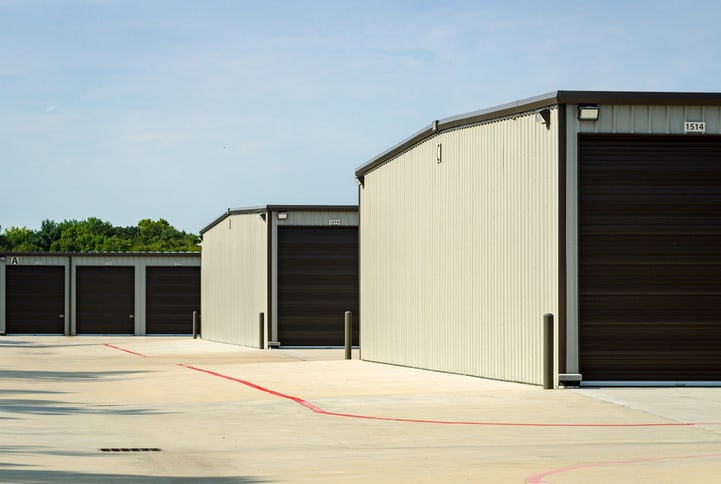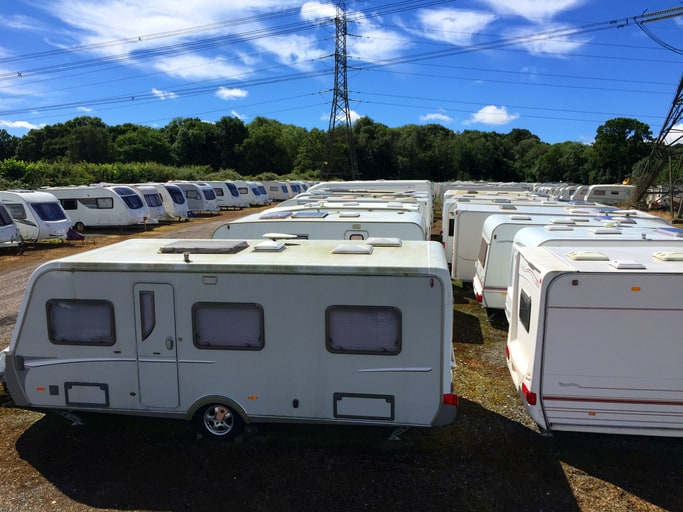How to Raise Rental Rates at Your Self-Storage Facility

Nobody likes price increases.
Renters don’t want to pay more, managers don’t want to deal with a slew of tenant complaints, and owners don’t want to lose customers who may already be on the fence. But consistent rental rate increases are a necessary part of a successful self storage business model.
Whether you’re renting an apartment, parking space, storage unit, or acre of farmland, there’s just no way around rent increases for your space. Energy costs increase. Taxes go up. Inflation makes supplies more expensive. Population increases and more people need a space to call home. Increasing real estate costs are just part of life.
The good news: Your tenants probably already understand this concept, too. Just like their apartment rent increases from year to year or lease to lease, they likely expect their storage unit rental rate to increase, too.
So how do you make the change smooth and stress-free for your tenants and managers?
First, you’ll need to iron out all the nitty gritty details – when to increase and by how much, which tenants’ rates to increase, how to inform the tenants, how to handle the potential flood of complaints, and of course how to maintain your sanity while politely responding to any furious phone calls. Read on for tips on nailing the details that will make your rate increase go a lot more smoothly.
When to increase prices and by how much
Much has been written by the self storage industry about rent increases, and each company handles them differently. Every storage market is different, and what works for the storage facility down the street might not work for you. Everyone has a different customer base, a different management style, and a different relationship with their tenants.
The easiest way to organize a price increase is to make it part of the yearly schedule. If you raise everyone’s rent by, for example, 7% each year they’re at your facility, the increase won’t catch them by surprise and you’ll be better able to integrate your projected earnings from your price increase into your budget.
Of course, 7% might not be the right amount. Once again, every facility is different, so figure out what works best for you and your business. Keep in mind, however, that certain customers’ prices are easier to raise than others. Renters of larger units, for example, will generally tolerate greater increases in their monthly rent in terms of raw dollar amount, while renters of smaller units will generally tolerate increases of a greater percentage of their previous rent.
For example, an extra $10 is not much when the renter has been paying for a large warehouse unit at $150 per month, but the guy paying $30 a month for his 5’x5’ will be a lot less happy. On the other hand, if you were to raise everyone’s rent by exactly 10%, the one with the large unit would be paying $15 more while the one with the small unit is paying just $3 more per month. This means, of course, that not everyone’s rent needs to increase by the same amount or the same percentage.
Before you do anything, consider these factors:
- Web rates should always be more than or equal to the rate that current tenants are paying. Minus first month promotions and such, you never want to ask current tenants to pay an increased rent rate without first adjusting your web rates to be the same price or more. If a current tenant goes to your website and sees that a new renter can pay less for the same size unit, they’ll surely be upset – and for good reason! Never send out a rate increase letter before you adjust your standard rates to be the same or more than the rent rate you’re asking current customers to pay.
- Loyalty matters to your customers. Your oldest customers choose to stick with you and (hopefully) they dutifully pay their bill every month. While their loyalty doesn’t make them exempt from rent rate increases, it’s a nice gesture to give them a small discount for their loyalty when compared to street rates for new renters. If they can go on your website and see that new rentals pay more per month than they do, they’ll be a lot less likely to gripe about their rate increase or move out to the facility down the street. Don’t forget about seasonal renters, either – if you’ve got a guy who stores his boat with you every winter, consider giving him a (slightly discounted) managed rate for his loyalty and willingness to come back to your facility year after year.
- Many will complain, but few will leave. It costs tenants a big chunk of time and money to move out – they’ll need to get a moving truck or friend with a pickup, and take time out of their busy schedule to lift heavy boxes and sort through stuff before trashing or selling. On the other hand, it costs them nothing to complain to you about rent increases – and as the old adage goes, “if no one is complaining, you probably didn’t raise rates high enough.” For the few long-term renters who do decide to move out immediately after a rent increase, know that it’s likely they were already planning to move out and your rate increase just spurred their action. Plus, their space will soon be occupied by someone who is happy to pay you full price.
- Bad weather makes for an ideal time to increase rates. The logic here is simple: people don’t want to load boxes and sweat all weekend when it’s a sweltering 100 degrees in the middle of July. They also don’t want to rent a moving truck and freeze their toes off when it’s below zero and biting cold in January. If you’re planning on doing consistent rate increases once a year, consider implementing them during a time of the year when moving out is inconvenient for tenants to discourage those who are grumping about the price and thinking about leaving from taking action.
The industry standard for price increases is to increase rates every nine months, but many REITs increase their prices more than that. For your facility, raising rates for all tenants once per year might be just perfect. Find what works for your business and stick to it – consistency is key with rate increases. The only thing tenants hate more than rate increases is unexpected rate increases they weren’t planning on.
Which tenants should see price increases first?
When increasing rates, use a combination of good business sense and simple logic to determine who sees price increases first. You don’t have to increase everyone at once. Be strategic, using resources like your facility’s economic occupancy numbers to make an informed decision. If your facility is enjoying near 100% occupancy, it’s a clear sign that your rates are too low. When rolling out price increases to tenants at your facility, you can sort tenants into more than just unit and price groups using tenant logic:
- Delinquent tenants tend to be most tolerant of price increases. They pay way more per month than a typical tenant in fees every month, and they still don’t move out. Chronically late tenants are much more tolerant of rent increases than on-time paying customers who are careful with their money.
- Upstairs and indoor tenants are more tolerant of price increases than drive-up tenants. It’s simply tougher to move out when you have to carry things upstairs or use an elevator, and tenants who rent upstairs feel like they’re getting more for their money with an indoor, climate-controlled unit. You can raise rates on indoor units more often than drive-up units and suffer fewer move-outs.
- Students are less tolerant of price increases than non-student tenants. Typically, the smaller the space, the less tolerant the renter is of a price increase, and students usually rent small spaces like 5’x5’s. It’s likely that they simply shopped for the cheapest rate they could find. Consider raising student prices on a yearly basis before prime student rental season.
- Tenants who came to you on a super-special discount are most sensitive to price increases. They likely chose you because you were the cheapest in town for the first month – and their price increase might spur them into moving out and finding the next cheapest rate. But don’t let this discourage you – if your marketing is on point and your rates are competitive, you’ll fill that space in no time.
Your rate increase should be high enough to make up for lost tenants due to rate increases. If you’re raising rent for ten customers all paying $50/month and you expect one tenant to leave because of the price increase, plan to make up the loss in the new revenue from your remaining nine tenants. If you’re going to do a rate increase, consider the potential benefit of hiking rates up a little further.
As can be seen in the chart, you would need to raise the monthly rent in this example by at least $6 in order to break even after the loss of a tenant. Of course, more than one tenant may leave, or none might leave at all. Use tenant logic to predict the loss of tenants and control what you can to ensure for a successful rate increase.
How to explain the rate increase to your tenants
Time it with a property improvement
The easiest way to explain an increase is to time it along with a property improvement. Even if it’s a small change, curb appeal is huge. While that was likely only one small part of the various cost increases that led to your decision to increase rent prices, it is the easiest for the customer to accept. Customers all deal with bills and taxes in their everyday lives, so they will probably have less sympathy for you if you cite those reasons. They’ll understand, of course, but they won’t like it. Pointing out the ways in which the facility has improved during their tenure will give them tangible proof of the necessity of their rent hike.
If you haven’t been doing regular rent increases, the first one will be most jarring to your long-term renters. If you’ve recently taken over the property and some of your renters haven’t ever seen a rent increase, some of your long-term renters will be flabbergasted, and you’ll need to handle them with kid gloves. In this case, you’ll want to be sure to time your increase with a noticeable improvement to the property like a new, modernized gate, a freshly painted parking lot, or bright, beautiful landscaping.
Communicate the increase amount
Be sure to write a smart rent increase note. You don’t need to explain all of the reasons behind the increase – your tenants don’t need to know about your occupancy, and they likely don’t care anyway. You don’t need to give tenants a lesson on inflation or explain the economy’s effect on small businesses. It’s also smart to just show the increase amount – and not their full rent rate – in your rate increase letter. Many tenants set their rent payments on autopay and forget their actual rent rate. Don’t remind them! Just list the increase amount. For a small unit, it may only be $10 more per month – not an amount most people would scoff at or struggle to come up with.
Give advance warning
Finally, be sure to let tenants know a few weeks before the actual increase so they aren’t blindsided by the sudden increase in one of their monthly bills. Give them at least one month to budget for the new expense and gently remind them of the new rent with a friendly text or email a few days before rent is due. Know that no matter what you do, there will surely still be complaints. But if you put in the time and effort, you can increase your rapport with your customers and reduce the number of unhappy callers later on.
How to deal with complaints
Step one in dealing with complaints: Expect complaints. You can help managers deal with complaints by prepping them far in advance and offering best practices and real life calls as examples of how to deal with a difficult customer who objects to the rate increase.
First and foremost, arm your team with research about your competitors. People will always come in and say they can get a better deal from the storage facility down the road, but can they really? Make sure managers know your competitors’ rates, how often they increase rent on average, when their last break-in was, and what makes your facility the better choice. Maybe your customer service is way better or your facility has recently been renovated. Whatever makes you better, be sure to have your elevator pitch prepared when customers come to you and say “well, maybe I’ll just go to Cheaper Storage Place Down the Road instead!”
Always remember your basic customer service skills and remain calm when talking to customers. Show them that you’re sympathetic and let them know you hate to raise rent. Explain to them the reasons why it is a necessity in self storage. Some tenants may leave as a result of the price increase, but if they’re willing to commit the time and money that it takes to remove all their belongings from their storage unit (the average move-out costs close to $200), they probably weren’t planning on sticking around too much longer anyway and used your necessary rent increase as the excuse.
That isn’t to say you should ignore the complaints on the assumption that most of your tenants will stay. Always greet your customers with open ears and a smile on your face, and think of ways to show your customers why you’re worth the rent increase.
Plan a charity event or host a fun, on-site event of some kind (like a barbecue or wine tasting!) and mingle with tenants. Do whatever you can to get their mind off of the extra money they’re now spending and back on why they love to be your customer.
Every storage facility is unique, so it might be difficult to know the best way for you to approach a price increase until you’ve actually done it. Always gauge the customer reaction, the retention rate, and the net increase in revenue. If you realize a particular method doesn’t work for you, you can try something else next time – and when it comes to rate increases, there will always be a next time. Don’t let rate increases ruin the fun you have running your storage facility. They’re a necessary evil, but with proper planning and customer service, they’re little more than a bump in the road.
Related Resources:

How to Start a Self-Storage Business
Launching a self-storage business for the first time? Start here and learn everything you need to know before you buy or build. Keep Reading

Building a Fortress: A Guide to Self-Storage Security
Need a little inspiration for advertising your self-storage facility? Check out these three examples to get your creative juices flowing. Keep Reading

7 Ways to Boost the Value of Your RV and Boat Storage Facility
Need a little inspiration for advertising your self-storage facility? Check out these three examples to get your creative juices flowing. Keep Reading